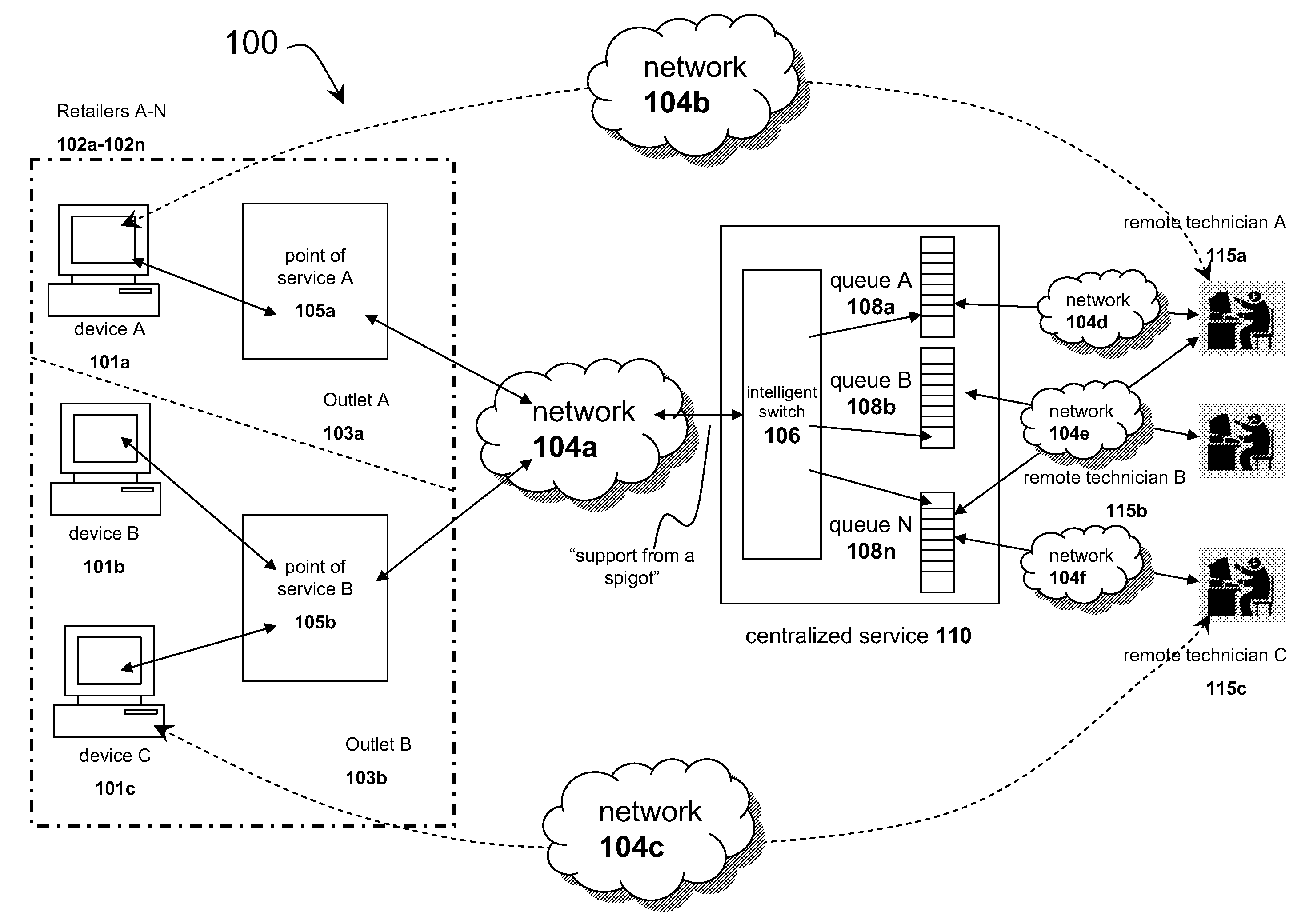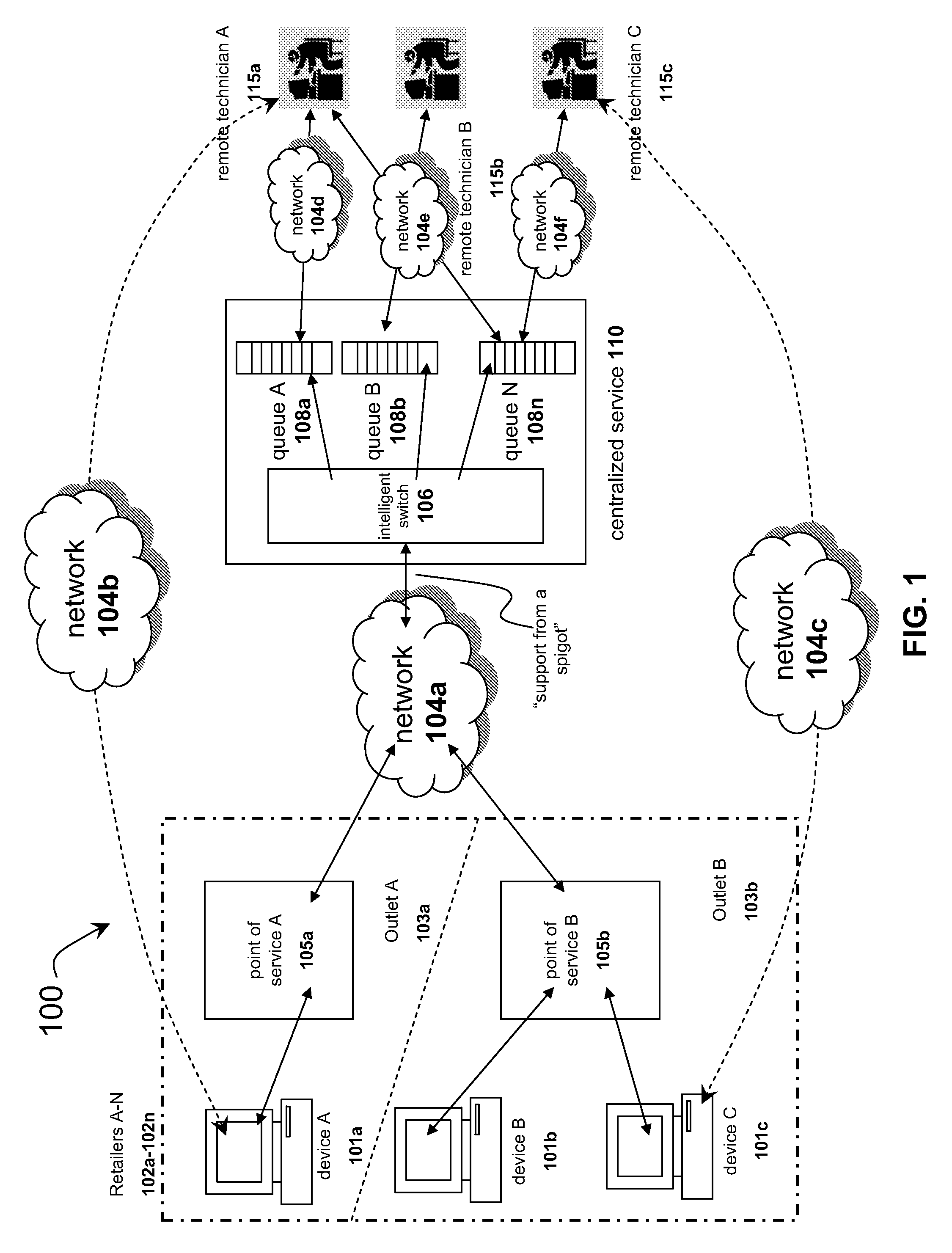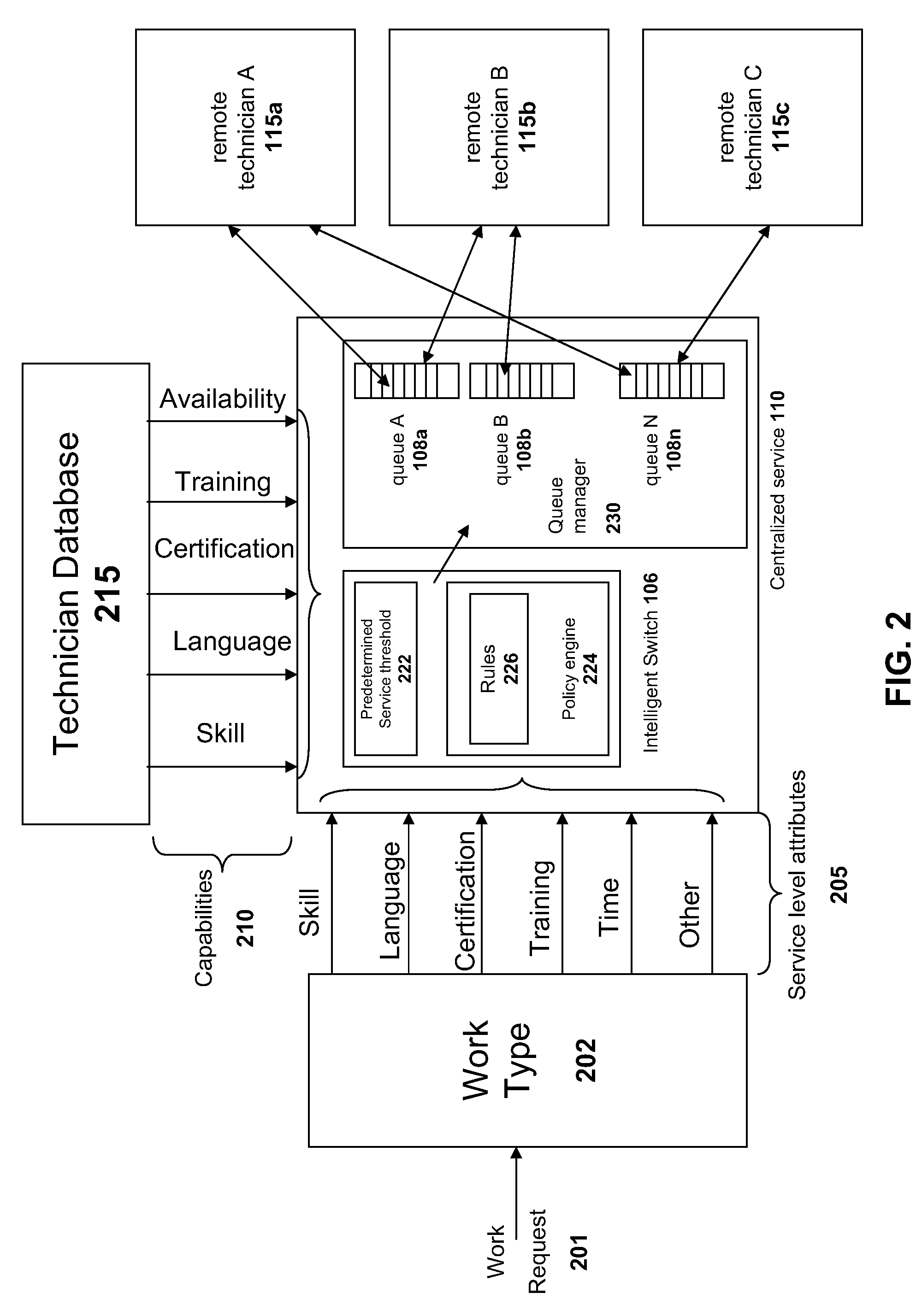Systems and methods for distributing remote technical support via a centralized service
a technology of remote technical support and centralized service, applied in the field of systems and methods for distributing remote technical support via a centralized service, can solve the problems of affecting the quality of remote technical support, the inability to repair without an extended wait, and the inability to meet the needs of customers, so as to achieve the effect of improving quality, reducing costs, and improving reliability
- Summary
- Abstract
- Description
- Claims
- Application Information
AI Technical Summary
Benefits of technology
Problems solved by technology
Method used
Image
Examples
Embodiment Construction
[0028]Referring to FIG. 1, a block diagram of an environment 100 to provide remote technical support to a device via a centralized service is shown and described. In brief overview, the system includes one or more consumer outlets 103a, 103b (103 in general) of a retailer 102 connected via a network 104 to a centralized service 110. In one embodiment, the centralized service 110 provides an interface to the consumer outlet 103 via an intelligent switch 106 that provides connectivity, work flow and queue management, and service process management for a remote technician from a pool of remote technicians 115a-115c (115 in general) to perform work on a device 101 at the consumer outlet 103. In another embodiment, an outlet 103 includes a point of service 105 to which a device 101 requiring service is connected. In still another embodiment, a request for service from the device 101 is transmitted to the centralized service 110 via the point of service 105 and a network 104a. In yet anot...
PUM
 Login to View More
Login to View More Abstract
Description
Claims
Application Information
 Login to View More
Login to View More - R&D
- Intellectual Property
- Life Sciences
- Materials
- Tech Scout
- Unparalleled Data Quality
- Higher Quality Content
- 60% Fewer Hallucinations
Browse by: Latest US Patents, China's latest patents, Technical Efficacy Thesaurus, Application Domain, Technology Topic, Popular Technical Reports.
© 2025 PatSnap. All rights reserved.Legal|Privacy policy|Modern Slavery Act Transparency Statement|Sitemap|About US| Contact US: help@patsnap.com



